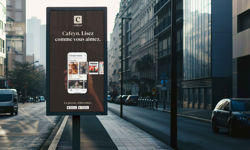
Q: How have people’s reading habits changed over the last ten years?
A:
Digital reading has really gained momentum over the last ten years as more people are reading via their mobiles and tablets and demand their favourite content at the click of a button. This digital shift has accelerated in recent years and with more time spent at home, it has become a key source of entertainment, inspiration and distraction.Fake news and reading on social media has been a key challenge of this period. Our research shows that consuming quality, verified journalism is important to two thirds of people so consumers are prepared to pay to ensure it is from a trusted source.
People are also reading a wider breadth of content than ever before as they deep dive into a few favourite titles then snack read across several to fuel passions and interests. With constraints on time, we also see that the time-poor consumer is often choosing short forms of content to read on a daily basis.
Q: How has what publishers produce changed over the last ten years?
A:
Ten years ago, publishers’ products were produced for print with some of them offering a digital edition.There has been a huge transformation from print-only magazines to publishers today who are multimedia owners, offering their readers several formats for their content and an overall high-level brand experience.
Publishers now have a website which is a content driver alongside their title and in many cases, a digital-first offering with full digital editions, podcasts, audio, video and often an e-commerce offering as part of their title.
Q: How have all-you-can-read platforms evolved over the last ten years?
A:
Ten years ago, all you can read platforms were just starting out but it was more about single digital issues than all you can read.Brands such as Netflix and Spotify changed the way in which consumers behave and consume content which had a knock on effect in how consumers expect to read. This made all you can read publishing platforms accepted in the industry and in-demand by consumers.
Today, all you can read platforms operate in a competitive environment with subscriber experience at the heart of the platform. They offer many features and opportunities to engage in the content to keep readers on publishers’ pages and interest growing across the breadth of content on the app.
Q: How can publishers use the data that platforms like Readly provide to better effect?
A:
We work in tandem with publishers to maximise global readership and develop their brands by giving them access to our growing data pool of more than 40+ billion data points.With this unique dataset, publishers receive exclusive insights into reader behaviour such as which pages subscribers spend time on, which issues and articles they read most and the profile of their digital readers. This allows them to become even more data-driven in executing both their content and overall business strategies which in turn enables more informed decisions on the future direction of their titles. In times of economic uncertainty, many companies consider data-driven marketing and decision making as key in order to really understand users’ preferences, to retain them and reduce churn.
Q: What trends do you think publishers need to be particularly aware of?
A:
Publishers are very aware of the trends coming up and we work alongside them to optimise their title. A slowdown in the global economic situation, inflation, supply chain disruptions (specifically paper shortages) and tightened financial conditions are continuing to challenge publishers.Consumers want more for their spend than ever before and in a highly competitive environment, they are less brand loyal, so publishers need to work on their product and keep engagement levels in their title high to keep subscribers loyal to their brand. We can expect to see more audio and video and higher quality content as publishers are continuously looking to improve their product.
Q: What do you think the publishing sector will look like in ten years’ time?
A:
We expect the digital penetration of magazines and newspapers to reach that of other media industries, such as music and film. But, there will always be a place for print publishing.Q: What’s in the pipeline from Readly?
A:
Our strategic priority is to focus on product development and be at the forefront of the digital transformation. We are enhancing the app and introducing new features to add value to our users and publishers. This will lead to an increase in subscriber engagement with the content on Readly which in return will support retention.We are working on our mobile optimisation as we know more people are reading on the go, so we want to optimise the experience for mobile readers. With the use of our data points, we are also looking to continue the personalisation of the reading experience.
We launched Readly podcasts in the UK earlier this year and then in Sweden too. We are currently evaluating user behaviour around listening habits and have a pipeline of new podcasts too. Audio is an interesting area and something we hope to develop more.
We have a strong portfolio of UK national and regional newspapers but I am sure we will continue to welcome more newspapers in other markets as our content portfolio continues to grow. We will also focus on delivering quality content and serving our subscribers to exceptional standards in existing markets whilst keeping our eyes open to new markets.

About us
Readly is the European category leader for digital magazines. The company offers a digital subscription service that lets customers have unlimited access to 7,500 magazines and newspapers including the catalogue of ePresse. We have subscribers in more than 50 countries and content available in 17 different languages.










